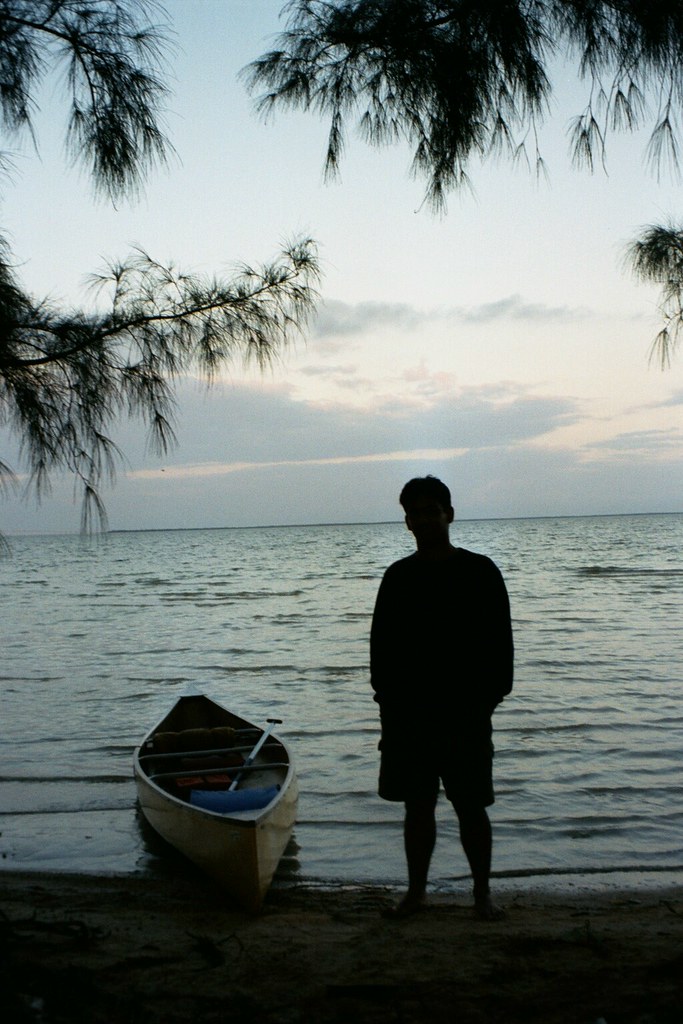It rained recently and I took my first tumble in Beijing. Was leaping across large puddles in an effort to get back to my dorm. Inevitably chose a manhole cover to land on, slipped, and made a hash of things. Could’ve been a lot worse: I managed not only to stay dry but also keep my book-bag dry. On the debit side, my left knee is bruised and bleeding. Oh well!
Last weekend finally ventured out in into Beijing. Hopped on bus number 420 (n.b., people from India) and was off to Wang Fu Jing, Beijing’s Fifth Avenue. I have read much of China’s poverty and inequality. Here you definitely don’t witness any poverty, just one end of the extreme that makes things so unequal. Wang Fu Jing is a paved road that runs north south a couple of blocks east of the Forbidden City. On either side are a variety of stores with a variety of signs. No vehicles are allowed, everything is clean and sanitized, and there are only a handful of stalls on the road itself selling drinks and the like. This gives the street a very European feel. Matter of fact, but for the signs and the people, it could very well pass for a shopping area in a German or French city.
With me were Manfred (no, not the Ray Romano voiced wooly mammoth from Ice Age) and Becca. Manfred is also at Columbia, studying contemporary China, and Becca studies Buddhist art of the Song period at Michigan. Both live in my dorm and know way more Chinese than I do.
From Wang Fu Jing the three of us walked down to Tiananmen and the Forbidden City, or Gugong (Imperial Palace Museum) as it is known here. One has to be careful when entering the Forbidden City, not because of Mao’s wary eye, but in order to sidestep the throngs of people getting their photographs taken with the gates and Mao in the background. This has to be one of the most generic photographs taken around the world. We entered through vast doors, still probably of Qing vintage, and walked through a longish hallway and into one of the outer courtyards. Inside we found ticket stalls, some museums along the sides, as well as a small army barracks. I have to find out more about what purpose the outer courtyards served, whether they housed visiting dignitaries/embassies and the like. Walking through we entered another courtyard. At the end of this is the Gugong. The scale of the entrance and walls is quite impressive. The walls themselves are smooth and a shade of red, crowned with impressively carved buildings. The free ride ends at this point: you gots to pay if you wants to play. Given that it was already mid afternoon, we figured we’d play another time.
Several touts approached us while we were in the two courtyards. Trips to the Great Wall at Badaling, and all sorts of other touristy things on offer. I now have some sense of how tourists feel in India. It really can get a little much, all the harrying, that is.
Walking back out we ducked into a pedestrian subway and emerged onto Tiananmen. The largest public square in the world. Doesn’t seem all that much when standing on one corner, but make the effort and walk to the middle. Colossal emptiness. It truly is quite awe-inspiring. I wonder what students of architecture think about it. Everything seems far away, and there is no greenery in sight. Near the center is a huge granite pillar to the unknown/fallen soldier. While standing in front I am approached by a girl. Hello! She’d like to take a snap with me. So off I trot with her, strike a pose in front of the pillar, while her gentleman friend clicks away. Suddenly I am quite the spectacle.
skip to main |
skip to sidebar

A bit of this, some of that, but mostly not this, nor that.
About Me

- Giscard
- Itinerant idiot. Also impoverished. In all likelihood because of my itinerancy and my idiocy, since each is the other. Currently on a leave of absence from Columbia University, where I chase a pretentious and ever elusive goal, the realization of which would allow me to place three certain letters after my name, and mislead people on questions of Global and Sinological importance. As part of that overall process, spending 06-07 in Beijing, learning how to express myself poorly in yet another language.